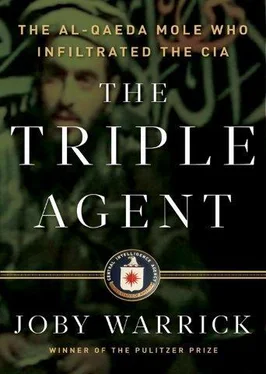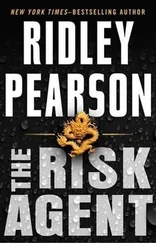Matthews’s close friends say her experiences during those weeks forever changed her. Before September 11 she had worked long hours with her Alec Station colleagues, trying to uncover the al-Qaeda plot they believed was in the works, but after the terrorist attacks she slept in a chair in her office and didn’t go home for days. Pregnant with her third child at the time, she became physically exhausted and eventually suffered a miscarriage, a misfortune that she suspected was due to the stress of her job. Yet she continued to work, telling friends repeatedly that she believed that a new attack was imminent, and only the CIA had the resources to stop it. Where al-Qaeda was concerned, Matthews had “drunk the Kool-Aid,” a CIA friend said.
Matthews was one of the first officers to be assigned the title of targeter, then a newly minted job in the agency’s counterterrorism division, and she soon acquired a high-profile case: She was to lead the agency’s search for an al-Qaeda logistics planner who went by the nom de guerre Abu Zubaida. Zubaida, a Palestinian whose real name is Zayn al-Abidin Muhammad Hussein, ran a jihadist camp near Khost before September 11, and over the years he had facilitated the training or travel arrangements for scores of al-Qaeda militants in Afghanistan. Matthews believed that Zubaida knew details about a planned second wave of al-Qaeda attacks against the United States, and she convinced her CIA superiors to let her assemble a team of newly hired intelligence officers to coordinate a global search for him.
Matthews set up shop in a small conference room that was soon jammed with computers and bodies. Her team worked elbow to elbow for weeks until, in March 2002, they caught a break: They traced Zubaida to a safe house in the Pakistani city of Faisalabad. On March 28, Pakistani and American intelligence officers raided the house and captured the man after a firefight that left him gravely wounded. He was the first significant al-Qaeda operative to be nabbed by the CIA.
Within days of his capture, Zubaida handed his American interrogators an intelligence breakthrough, revealing the identity of the principal architect of the September 11 attacks: Khalid Sheikh Mohammed. Later, when Zubaida stopped cooperating with his interrogators, the Bush administration authorized the use of “enhanced interrogation techniques,” including waterboarding, to force him to talk. Among the witnesses to these sessions was Matthews, who was flown to Thailand to help guide the teams of CIA interrogators in questioning the new captive. Years later the case became the center of a roiling controversy. Human rights groups, congressional committees, and even former Bush administration officials questioned every facet of the CIA’s handling of Zubaida, who came to symbolize the debate over the agency’s use of secret prisons outside normal legal constraints, as well as interrogation practices that the International Committee of the Red Cross condemned as torture. Later evidence suggested that Zubaida was never truly an al-Qaeda leader, but rather a logistics man with limited knowledge of the terrorist group’s strategy and plans. Still, Matthews would be admired within the counterterrorism division as the officer primarily responsible for the takedown of the agency’s first high-value terrorist captive and the man who led the CIA to the mastermind of the September 11 attacks.
By the middle of the decade Matthews was in management, directing the Counterterrorism Center’s teams of reports officers. She also forged alliances with a cadre of other tough women who were ascending into the division’s leadership ranks a few career jumps ahead of her. One of her new mentors was a notoriously sharp-tempered redhead who had played a key role in many of the agency’s most aggressive—and controversial—operations, from “enhanced interrogation” to a classified program known as rendition, in which suspected terrorists were abducted overseas by CIA operatives and flown to a third country to be interrogated and, in some cases, tortured. The two women shared an infatuation with tough guy actor Tommy Lee Jones, and they were fond of quoting a particularly apt line from his 2007 film No Country for Old Men : “You can’t stop what’s comin’. It ain’t all waiting on you.”
As she moved up the hierarchy, Matthews was sometimes accused of being abrasive, stubborn, and impatient. Nothing riled her more than the suggestion that she as a woman was not adequate to a task—any task. In Langley several male colleagues began to refer to her by an unflattering nickname, Ruth, short for ruthless.
There, and later at Khost, she would feel obliged to prove herself time and again, fighting a never-ending battle for respect in a world that had long been dominated by men.
“You’re telling boys how to do their business,” said a CIA Afghan hand who counseled Matthews before she left for Khost. “Typically the answer is, ‘Missy, you don’t know what it’s like.’ ”
It was true that the Khost Matthews knew was nothing like the Khost of a few years before. Long before the base was safe enough for the likes of analysts and targeters, Khost belonged to America’s original black ops force, the paramilitary officers of the CIA’s Special Activities Division. Recruited mostly from the ranks of Green Berets, Navy SEALs, and other elite military units, the CIA’s SAD officers had been the country’s premier force since the 1950s for clandestine missions outside the writ of conventional troops, such as sabotage, guerrilla warfare, and targeted killings. Teams of SAD officers and Special Forces commandos spearheaded the assault against al-Qaeda in Afghanistan in 2001 that drove the Taliban government out of power. About a dozen of them set up camp in the eastern city of Khost that winter to begin cleaning up lingering pockets of Taliban resistance, and SAD officers had stayed there ever since.
In those final days of 2001, when Matthews and her team in Langley watched in anguish as Osama bin Laden slipped away into Pakistan, the Khost SAD team formed at an air base in the Pakistani city of Jacobabad and choppered across the mountains to take control of the airfield. They very nearly met with disaster in their first minutes on the ground.
They arrived in Khost at 2:00 A.M. on a bitterly cold morning, carrying light weapons and gear, along with a small trunkful of cash and a pledge of assistance from a local commander who opposed the Taliban. The local commander was waiting for them, as promised. But so were dozens of fighters from rival clans. Turbaned gunmen glowered at one another in a tense standoff with the Americans in the middle.
In the darkness, the U.S. team could see that several Afghans on different sides had pulled out grenades. They were prepared to fight to the death, as the CIA officers later learned, to decide who would get to play host and receive the bulk of American money and modern weapons.
“One of the factions knew we were coming, and then all the others found out,” said one American officer who was present. “It was early in the morning, and no one had had their tea. So the grenades came out.”
One of the CIA officers quickly stepped up and began lavishing praise on the Afghans for their hospitality and bravery. Uncle Sam’s pockets are deep, the man assured the group, a rough-looking assemblage of bandoliers and craggy, bearded faces that reminded some of the Americans of the cantina bar scene in Star Wars . The fighters drifted off, the crisis temporarily defused. Relieved, the weary officers proceeded to pick their way through the town in the darkness, with some of them bunking down at an abandoned elementary school that would serve as temporary outpost.
It was a poor choice for a fort. The school building was on a major thoroughfare and nearly impossible to defend against suicide bombers or rocket attacks. Nearby houses and trees offered hideouts for snipers. There was no running water or electricity. The town itself was dirty and sinister, overrun by armed gangs from as many as seven different clans, whose allegiances seemed to shift by the day. Random gunfire at odd hours kept the men on edge, never completely sure if the shots portended an attack or if it was just another Afghan wedding celebration.
Читать дальше












